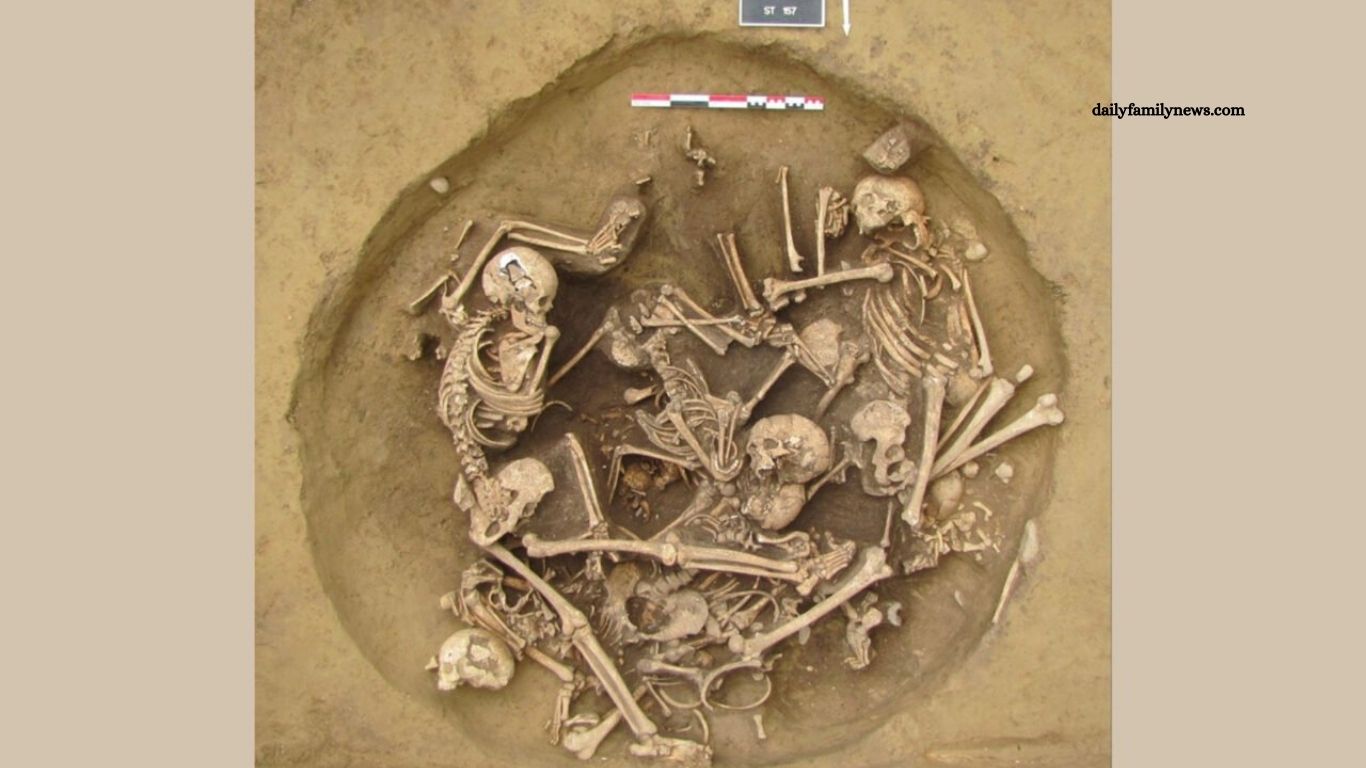When we think of Stone Age people, we often picture small communities in caves, carving up their latest hunt with primitive tools, and creating rock art that imitates the world around them. Yet during the Neolithic—the final stage of the Stone Age, roughly 9000 to 3300 BCE—these communities were also capable of extreme violence.
A study published today in Science Advances reveals chilling evidence that Neolithic people in northeastern France brutalized their enemies. The research suggests some of the earliest known instances of gruesome victory rituals following warfare.
An international team examined skeletal remains and severed limbs from burial pits dated between 4300 and 4150 BCE at two sites near Strasbourg: Achenheim and Bergheim. “A total of 82 humans are analyzed,” the researchers reported. The findings paint a stark picture of conflict and ritualized violence during a period often imagined as simple and peaceful, showing that the human capacity for cruelty has deep roots in prehistory.
Read More: The Age of AI Psychosis: Could You Be at Risk?
Some remains bore gruesome wounds
Some Neolithic remains show evidence of horrific violence. Researchers analyzing burial pits at Achenheim and Bergheim near Strasbourg, dating to 4300–4150 BCE, found differences between victims and nonvictims, suggesting that some individuals were invading outsiders brutally killed, exposed, and deposited with trophies such as severed upper limbs. These findings may represent one of the earliest well-documented martial victory celebrations in prehistoric Europe.
Previous studies in the Upper Rhine Valley had indicated this era involved military invasions and cultural upheaval, but it was unclear whether the buried individuals were locals or prisoners of war. In addition to the severed limbs, researchers documented unhealed skull fractures and other traumatic injuries, indicating that many victims died violently during conflict. Those without such injuries likely received standard burials.
The study, led by an international team including Teresa Fernandez-Crespo of Valladolid University, provides stark evidence that Neolithic communities were not only hunters and farmers but also active participants in brutal warfare.
Victims were likely invaders
Some Neolithic remains reveal chilling evidence of wartime brutality. Burial pits at Achenheim and Bergheim near Strasbourg, dating to 4300–4150 BCE, contained victims with traumatic injuries, including unhealed skull fractures and severed upper limbs, while others were buried normally. Researchers suggest these gruesome findings may represent one of the earliest known martial victory celebrations in prehistoric Europe.
To understand the distinction between victims and non-victims, the team, led by Teresa Fernandez-Crespo of Valladolid University, conducted isotopic analyses. These tests revealed that non-victims were local, while the brutally killed individuals came from other regions, indicating they were likely invading outsiders. The researchers propose that these victims may have been considered socially “remote” or nonhuman by their captors, explaining their violent treatment and deposition alongside trophies.
This study paints a stark picture of the Neolithic era: while communities were farming and creating art, they were also capable of extreme violence, and for once, the term “overkill” is literal.
Frequently Asked Questions
What time period does this research focus on?
The study examines Neolithic communities in northeastern France, specifically between 4300 and 4150 BCE.
Where were the burial sites located?
The remains were found at two sites near Strasbourg: Achenheim and Bergheim.
What evidence suggests violent deaths?
Victims showed unhealed skull fractures and severed upper limbs, indicating they were killed violently, likely during battles or raids.
Were all individuals buried violently?
No. Some remains showed no trauma and were buried normally, suggesting they were locals not involved in conflict.
How did researchers determine the victims were outsiders?
Isotopic analyses revealed differences in chemical signatures, showing that victims came from regions outside the local area.
What does this tell us about Neolithic society?
It suggests that Neolithic communities were capable of organized warfare and may have celebrated victories with brutal rituals, challenging the notion of a peaceful Stone Age.
Who conducted the study?
An international team of researchers, including Teresa Fernandez-Crespo from Valladolid University, published their findings in Science Advances.
Conclusion
The findings from Achenheim and Bergheim reveal that Neolithic communities were not only skilled farmers and artisans but also engaged in organized, violent warfare. The combination of unhealed injuries, severed limbs, and isotopic evidence showing victims were outsiders suggests these were likely invading groups brutally killed and used as trophies in early victory rituals. This research challenges the traditional view of the Stone Age as peaceful, highlighting that extreme violence and ritualized celebrations of conquest have deep roots in human history.
